
Despite being a well-developed state, Ohio is teeming with wildlife. From its border with Lake Erie in the north to Wayne National Forest and the Ohio River in the south, many animals can be found throughout the state. Unfortunately, not all of these animals belong in the state. Learn about 10 invasive species in Ohio and see how they’re potentially harmful to the delicate natural balance.
What Is an Invasive Species?

The
Asian Giant Hornet
is not only invasive, but it’s also the cause of dozens of human deaths every year.
©iStock.com/kororokerokero
An invasive species is not merely an animal that lives in a state but is not originally from there. Instead, an invasive species is defined as any non-native species that cause economic and environmental harm or harm to human health.
An invasive species can be something as simple as a different kind of fish that disrupts the food chain or something as serious as a nest of Asian giant hornets that poses a serious risk to human health. They can also include plants.
What Are 10 Invasive Species in Ohio?
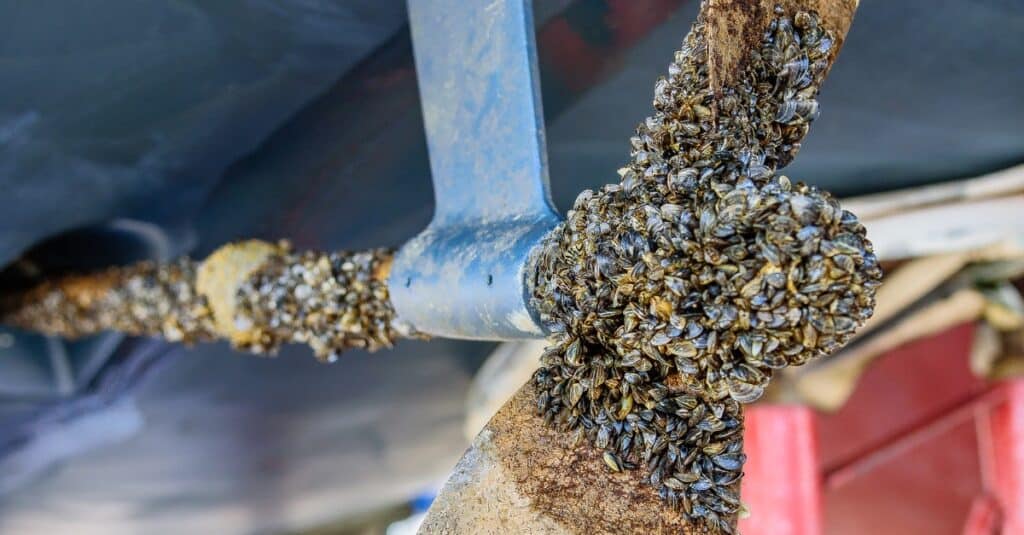
This is a bronze, two-blade propeller on a stainless steel shaft on a 36-foot sailboat, covered in
zebra mussels
.
©iStock.com/JeffCaughey
Ohio is home to many invasive species. Given that the state is bordered by Lake Erie and the Ohio River, it’s no surprise that some of the invaders live in the water. See how the following creatures harm the environment or people that live in Ohio.
1. Spotted Lanternfly

The
spotted lanternfly
has made a splash in the news this year due to its aggressive damage to crops.
©iStock.com/arlutz73
Spotted lanternflies are insects native to China that were first detected in the U.S. in 2014. These insects infest trees and plants, leaving them vulnerable to damage and the growth of black sooty mold and other fungal diseases. People in Ohio and beyond are encouraged to report sightings of spotted lanternflies and to kill them whenever possible.
2. Sea Lamprey
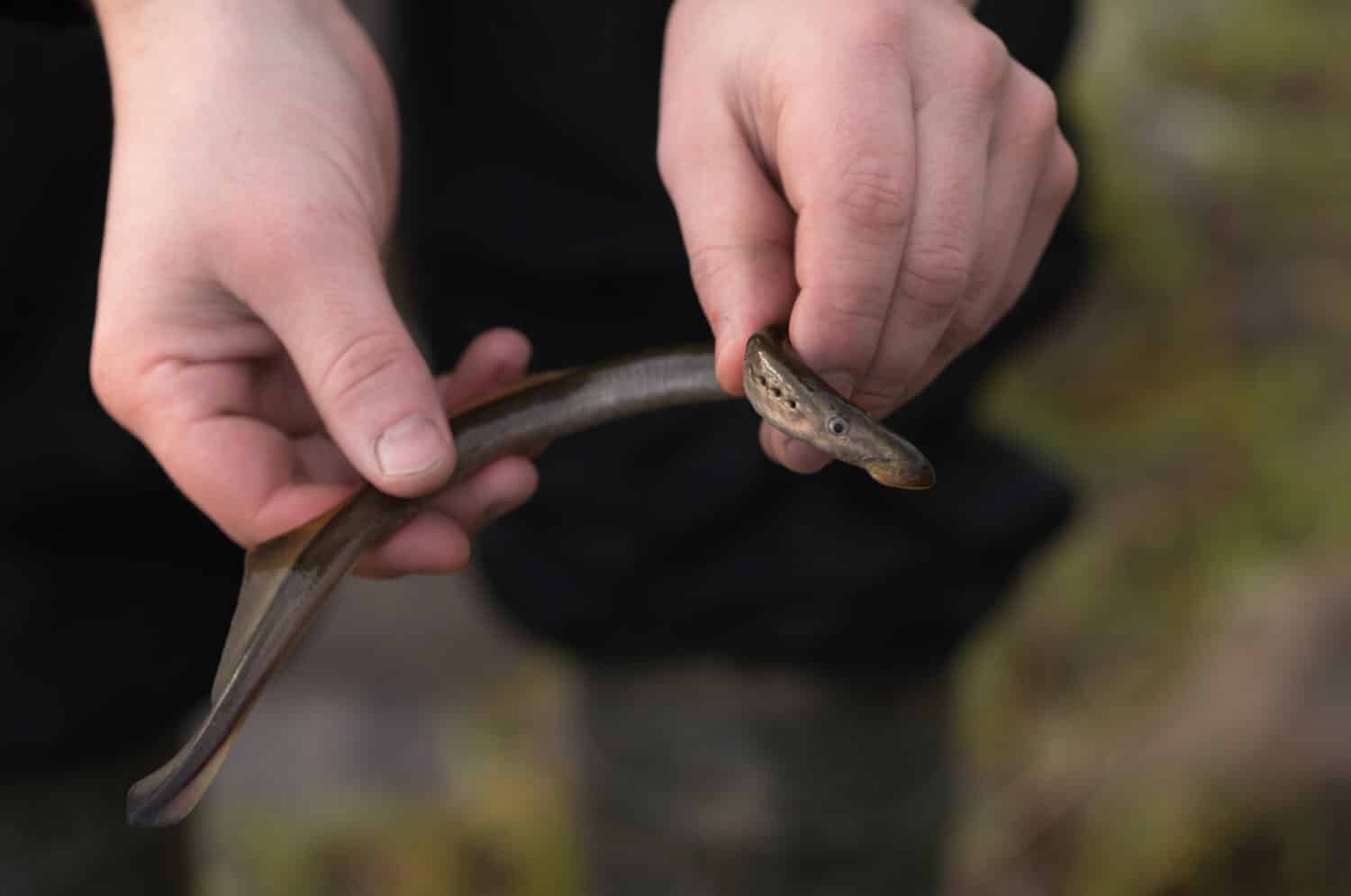
While small, sea lampreys can cause significant harm to fish.
©IRINA ORLOVA/Shutterstock.com
Sea lampreys are eel-like fish that feed on other fish. They entered the Great Lakes, including Lake Erie, at some point in the 1920s. Federal officials have worked to control the population of these harmful creatures. The problem with these animals is that they can kill lake trout and whitefish within the environment if they’re not controlled.
3. Zebra Mussel
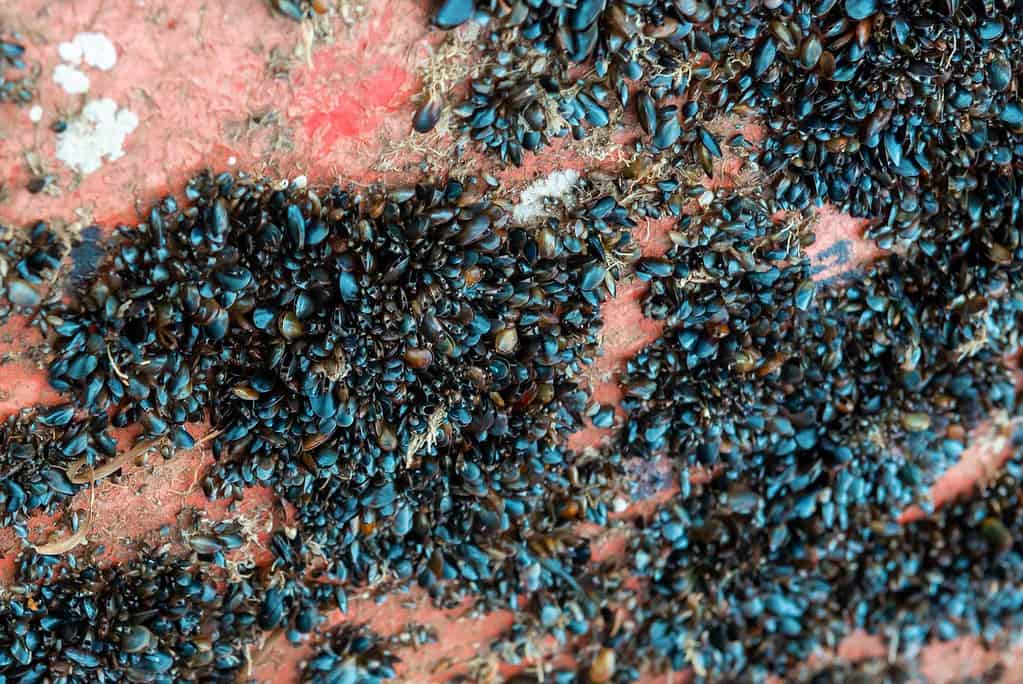
A cluster of small blue zebra mussels and barnacles is attached to the bottom hull of a red metal ship.
©Dolores M. Harvey/Shutterstock.com
Zebra mussels are creatures originally from Eurasia, but they managed to invade the Great Lakes starting in the 1980s. Since then, the population of these mollusks has exploded, leading to them spreading to far-flung regions including California.
These animals harm the environment by eating the algae necessary for native animals to survive. They can also become a hindrance to the water intake of power plants.
4. Round Goby
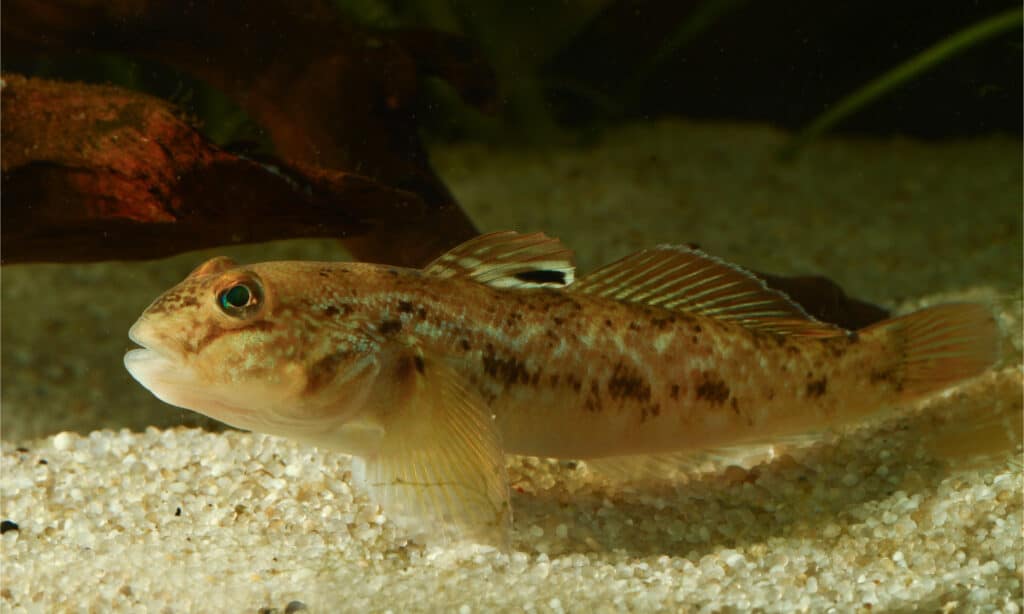
There are invasive colonies of round gobies in America’s Great Lakes.
©Geza Farkas/Shutterstock.com
The round goby is an invasive species in Ohio that originated from Eurasia. These fish are considered an invasive species throughout the Great Lakes region of the United States. The round goby is known to displace native fish by consuming young fish and eggs of native species. Also, they drive out native fish from their habitats and spawning areas.
5. Bighead Carp
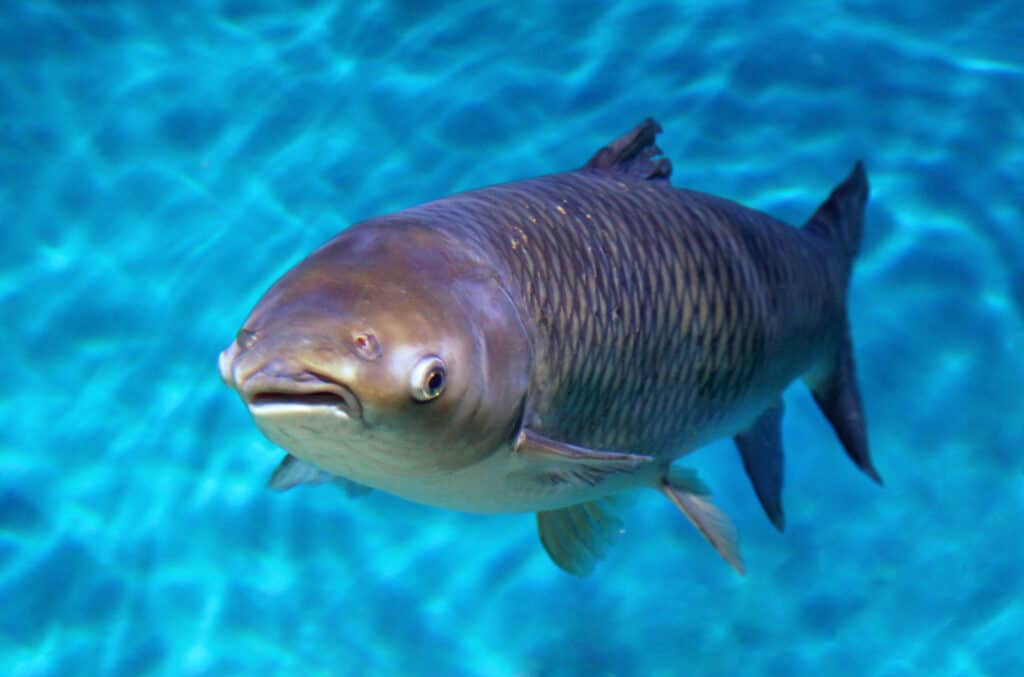
As is typical among bottom feeders, the bighead carp has eyes facing downward.
©Katoosha/Shutterstock.com
The bighead carp originally came from East Asia. These fish are known for getting very large, measuring over 2 feet on average. However, they can weigh upwards of almost 5 feet and weigh over 80 pounds. Not much is known about the long-term impacts of the bighead carp, but they’re believed to compete with native fishes for food. Also, they consume some native fish and mussel species.
6. Feral Swine
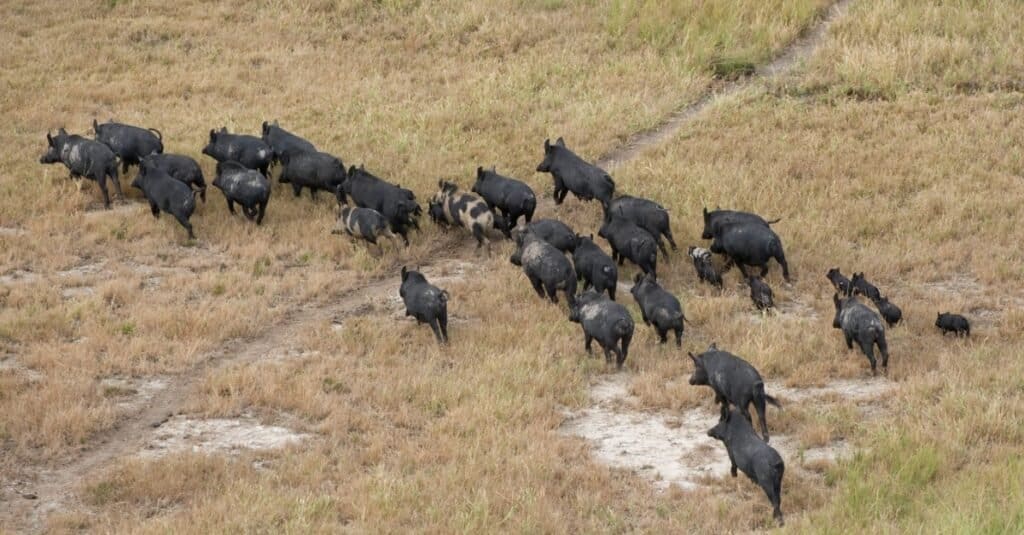
Feral pigs cause a lot of damage to crops and the landscape due to rooting.
©iStock.com/JohnCarnemolla
Eurasian wild boars and domestic pigs that have escaped their enclosures and reproduced in the wild are collectively called feral swine. These animals cause major damage to the crops and natural resources in the areas they inhabit. Currently, they are found in at least 38 states throughout the United States.
These animals can weigh hundreds of pounds, and they reproduce quickly. A female can have two litters a year starting from the time they are six months old. Small litters of feral swine can result in as few as four piglets or as many as 10! Some sources estimate that these animals cause over $1.5 billion in damage every year.
7. Garlic Mustard

While harmless looking, garlic mustard is an invasive plant found throughout Ohio.
©Martin Fowler/Shutterstock.com
Garlic mustard is an invasive species in Ohio, and it is also found throughout many parts of the U.S. This biennial plant is known for rapidly spreading throughout forests, choking out wildflowers, and harming soil fungi.
8. Emerald Ash Borer
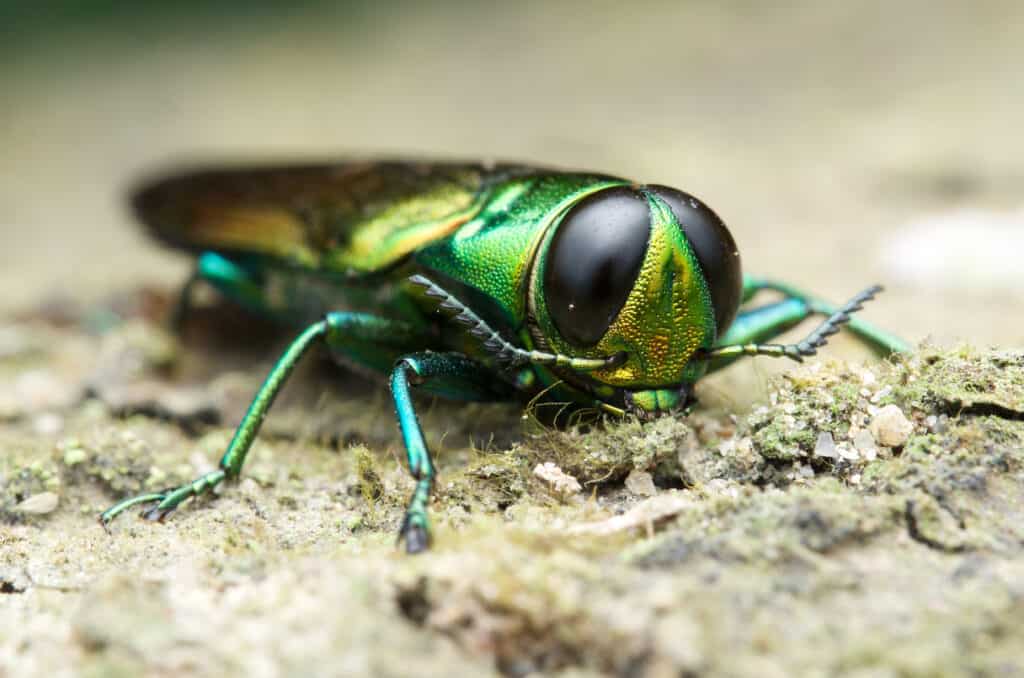
The EAB has killed millions of trees throughout the U.S.
©Herman Wong HM/Shutterstock.com
Emerald ash borers are an Asian beetle that has caused widespread harm to many tree species throughout the state. These beetles lay their eggs below ash trees’ bark. When the larvae hatch, they eat portions of the tree, often resulting in the trees dying. EABs have killed tens of millions of trees throughout the U.S., and they are found in about 30 states.
9. Black Carp

The black carp is a fish from East Asia.
©ivSky/Shutterstock.com
Black carp are another invasive fish species in Ohio. These fish originated in East Asia, but they were accidentally brought to the U.S. in the 1970s. Since then, these fish have spread throughout much of the Mississippi and Missouri Rivers and beyond.
While they are not found extensively in Ohio, they have been found in the state. These fish feed on mollusks, and a large population of these creatures could likely harm the native species.
10. Lesser Celandine
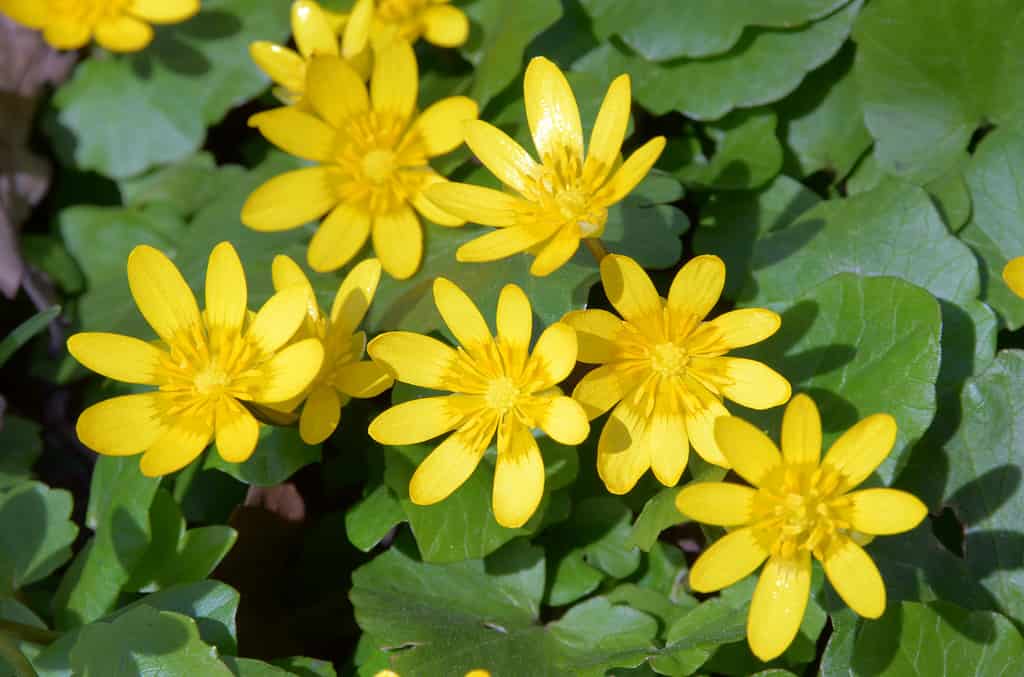
While pretty, these plants can choke out many others.
©Anatoliy Vlasov/Shutterstock.com
The lesser celandine plant is from the buttercup family. While it can be pleasant to look at, this plant is an invasive species in Ohio. These mat-forming perennial plants have thick roots and tend to emerge before other plants in this range. As a result, they can choke out other native plant species.
Ohio is home to a variety of different invasive species. Some species are being actively managed while others are too engrained in the region to combat. Ohioans should learn about what invasive species live in their area so they can take measures to report or eradicate them.
| Type of Invasive Organism | Organisms |
|---|---|
| Plant | Garlic Mustard, Lesser Celandine |
| Mammal | Feral Swine |
| Fish | Sea Lamprey, Round Goby, Bighead Carp, Black Carp |
| Insect | Spotted Lanternfly, Emerald Ash Borer |
| Mollusk | Zebra Mussel |
The photo featured at the top of this post is © iStock.com/sus scrofa
Thank you for reading! Have some feedback for us? Contact the AZ Animals editorial team.






